“4 pcs Locking Pliers Set” has been added to your cart. View cart
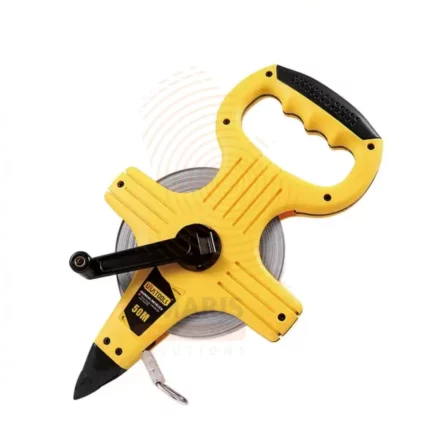
Steel Long Tape
$17,700.00 Original price was: $17,700.00.$17,200.00Current price is: $17,200.00.
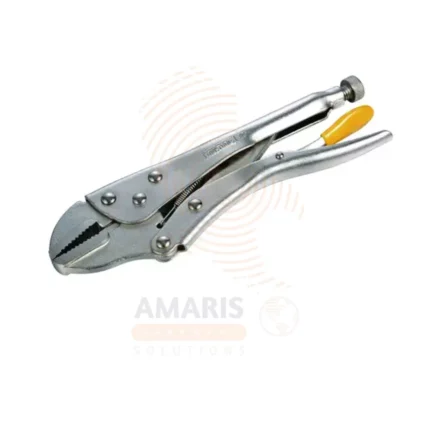
Straight Jaw Locking Pliers
$11,080.00 Original price was: $11,080.00.$10,580.00Current price is: $10,580.00.
Steel Straight Pattern Snips
$13,600.00 Original price was: $13,600.00.$13,100.00Current price is: $13,100.00.
WhatsApp Order
Steel straight pattern snips, also known as tin snips or aviation snips, are cutting tools designed for cutting and shaping sheet metal. The term “straight pattern” refers to the blades’ cutting orientation, which is straight and parallel to each other. These snips are commonly used in metalworking, HVAC (heating, ventilation, and air conditioning), and other related industries.
SKU:
AHS56934
Category: Pliers & Cutters
Description
Steel Straight Pattern Snips Uses
- Sheet Metal Cutting: Steel straight pattern snips are specifically designed for cutting sheet metal. They are commonly used in metalworking and fabrication projects where precise straight-line cuts are required.
- HVAC Work: Heating, ventilation, and air conditioning (HVAC) professionals often use straight pattern snips to cut and shape sheet metal components such as ductwork, vents, and pipes.
- Roofing: Roofers use tin snips to cut and shape sheet metal roofing materials, flashing, and other metal components during the installation and repair of roofs.
- Automotive Repair: In automotive repair and restoration, steel straight pattern snips are employed to cut and shape sheet metal for bodywork, repairs, and fabrication of custom components.
- Construction: Construction workers use tin snips for various tasks, including cutting metal studs, flashing, and other metal components used in building construction.
- DIY and Home Improvement: Steel straight pattern snips are useful for DIY enthusiasts and homeowners for tasks like cutting sheet metal for home projects, repairs, or crafting.
- Electrical Work: Electricians may use tin snips to cut and shape metal electrical conduit or other metal components in electrical installations.
- Plumbing: Plumbers may use straight pattern snips to cut and shape sheet metal for plumbing vents, pipes, and other metal fixtures.
- Metal Art and Sculpture: Artists and sculptors working with metal often use tin snips to cut and shape sheet metal for creating intricate designs and sculptures.
- Craftsmanship: In general, any craft or trade that involves working with sheet metal can benefit from the precision and versatility of steel straight pattern snips.
Reviews (0)
Be the first to review “Steel Straight Pattern Snips” Cancel reply
Related products
2 PC Curved Jaws Locking Pliers
Curved jaws locking pliers with TPR (Thermoplastic Rubber) handles are a type of versatile hand tool designed for gripping, clamping, and holding objects securely. The curved jaws provide a better grip on rounded or irregularly shaped surfaces, while the TPR handles offer ergonomic comfort and a non-slip grip.
These pliers typically feature a locking mechanism that allows users to adjust and maintain the clamping force, enabling them to securely hold objects of various sizes. The combination of curved jaws and TPR handles enhances the tool's usability and efficiency, making it suitable for a wide range of applications in mechanics, construction, and other industries where a reliable gripping tool is essential.
Aviation Snip Left
An aviation snip, specifically the left-cutting variant, is a hand tool designed for cutting sheet metal in the aviation and metalworking industries. It features a serrated cutting edge on the left blade, allowing it to make precise cuts in a straight line or curves when trimming or shaping sheet metal components. The ergonomic design and compound leverage of aviation snips make them effective for cutting through various gauges of metal with ease, providing efficiency and accuracy in tasks such as fabrication, repairs, and maintenance within the aviation field.
Diagonal Cutting Pliers
Diagonal cutting pliers, also known as diagonal pliers, side cutters, or wire cutters, are hand tools designed for cutting wires, cables, and other materials. They feature sharp, angled cutting edges that form a diagonal line when the jaws are closed. This design allows the pliers to make clean and precise cuts close to the surface, making them particularly useful for trimming wires and removing excess material. Diagonal cutting pliers are commonly used in various applications, such as electrical work, crafting, and general household tasks where cutting, snipping, or trimming is required.
External Circlip Pliers Straight
External circlip pliers – straight, also known simply as external circlip pliers or snap ring pliers, are specialized hand tools designed for installing and removing external circlips or snap rings. Circlips are ring-shaped fasteners with open ends that fit into machined grooves on the outside of a shaft or bore. External circlip pliers are specifically designed to work with these types of retaining rings.
The "straight" designation indicates that the tips of the pliers are aligned in a straight line, as opposed to angled or curved tips. This straight configuration allows for easier access to circlips in certain applications.
These pliers typically have pointed or semi-circular jaws that fit into the holes or notches of the circlip, facilitating the compression or expansion of the ring for installation or removal. The handles are designed for comfortable grip and effective leverage
Fence pliers
Fence pliers are a specialized type of pliers designed for use in fencing and related tasks. They typically feature a combination of functions that make them well-suited for various activities involved in installing, repairing, and maintaining fences. These pliers often include features such as a gripping jaw, wire-cutting blades, a staple puller, and sometimes a hammerhead. The design of fence pliers aims to provide versatility and convenience for professionals or DIY enthusiasts working with fencing materials, wires, and staples.
Insulated Wire Stripping Pliers
Insulated wire stripping pliers are specialized hand tools designed for safely and precisely removing the insulation from electrical wires. These pliers feature specially shaped and sharpened cutting edges, allowing users to strip away the outer insulation without damaging the underlying conductive wires. The tool is also equipped with insulated handles to provide electrical safety for the user when working with live wires. Insulated wire stripping pliers are commonly used in electrical and electronic applications to prepare wires for connections, terminations, or splicing while minimizing the risk of electrical shock or damage to the conductor.
Internal Circlip Pliers Bent
Internal circlip pliers bent refer to a specialized hand tool designed for installing and removing internal circlips. Circlips, also known as retaining rings or snap rings, are used to secure components onto shafts or inside bores. Internal circlips are specifically designed to fit into a groove on the inside of a bore.
The term "bent" in the context of internal circlip pliers indicates that the tips or jaws of the pliers are angled or curved. This design is intended to facilitate easier access to the circlip in confined or hard-to-reach spaces, such as deep within a bore or inside a machine assembly. The bent shape allows the pliers to grip and manipulate the circlip effectively, providing the user with better control during installation or removal.
Wire Rope Cutter
A wire rope cutter is a specialized tool designed for cutting wire ropes, cables, and similar materials. It typically consists of a set of sharp blades or jaws that are capable of cleanly and efficiently severing wire ropes of varying diameters. These tools are commonly used in construction, maritime, and industrial applications where precise and controlled cutting of wire ropes is necessary. The design of wire rope cutters may vary, but they are generally built to provide strength, durability, and ease of use in order to meet the demands of cutting robust materials like steel cables.


 Acrylic Sealants
Acrylic Sealants Adhesive Application Tools
Adhesive Application Tools Construction Adhesives
Construction Adhesives Double-Sided Tape
Double-Sided Tape Masking Tape
Masking Tape Epoxy & Resins
Epoxy & Resins Duct Tape
Duct Tape Electrical Tape
Electrical Tape
 Auto Body Repair Tools
Auto Body Repair Tools Automotive Wrenches & Socket Sets
Automotive Wrenches & Socket Sets Battery Chargers & Jump Starters
Battery Chargers & Jump Starters Car Jacks & Stands
Car Jacks & Stands Car Wash & Detailing Products
Car Wash & Detailing Products Diagnostic Tools
Diagnostic Tools Tire Inflators & Wheel Tools
Tire Inflators & Wheel Tools Oil & Lubricants
Oil & Lubricants Vehicle Lighting
Vehicle Lighting Suspension Tools
Suspension Tools Vehicle Maintenance Tools
Vehicle Maintenance Tools
 Adhesives & Sealants
Adhesives & Sealants Bricks & Blocks
Bricks & Blocks Cement & Concrete
Cement & Concrete Drywall & Plaster
Drywall & Plaster Insulation Materials
Insulation Materials Roofing Materials
Roofing Materials Paints, Primers & Coatings
Paints, Primers & Coatings Marking & Layout Tools
Marking & Layout Tools Quarry Machinery
Quarry Machinery
 Electric Motors
Electric Motors Electrical Boxes & Panels
Electrical Boxes & Panels Electrical Cables & Wires
Electrical Cables & Wires Extension Cords & Power Strips
Extension Cords & Power Strips Fuses & Relays
Fuses & Relays Lighting Fixtures & Bulbs
Lighting Fixtures & Bulbs Conduit & Fittings
Conduit & Fittings Cable Management
Cable Management Measuring & Test Equipment
Measuring & Test Equipment Circuit Breakers
Circuit Breakers Connectors & Terminals
Connectors & Terminals Switches & Sockets
Switches & Sockets
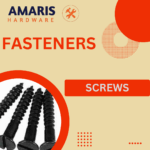 Screws
Screws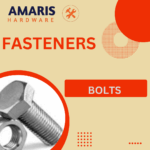 Bolts
Bolts Nuts
Nuts Washers
Washers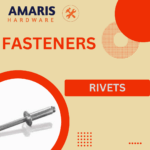 Rivets & Riveter
Rivets & Riveter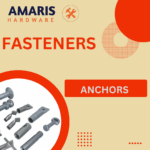 Anchors
Anchors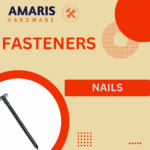 Nails
Nails Threaded Rods
Threaded Rods Clips & Clamps
Clips & Clamps
 Garden Fencing
Garden Fencing Garden Furniture Hardware
Garden Furniture Hardware Agricultural Machinery
Agricultural Machinery Lawn Mowers
Lawn Mowers Trimmers & Edgers
Trimmers & Edgers Shovels & Spades
Shovels & Spades Rakes & Hoes
Rakes & Hoes Pruning Shears & Loppers
Pruning Shears & Loppers Watering Systems
Watering Systems Digging Equipment
Digging Equipment Pond Equipment
Pond Equipment
 Generator Accessories
Generator Accessories Inverters
Inverters Diesel & Gasoline Generators
Diesel & Gasoline Generators Power Inverters
Power Inverters Transfer Switches
Transfer Switches Portable Generators
Portable Generators Air Compressor
Air Compressor Pressure Washers
Pressure Washers Water Pumps
Water Pumps
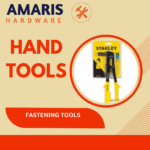 Fastening Tools
Fastening Tools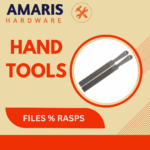 Files & Rasps
Files & Rasps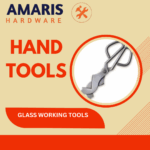 Glass working Tools
Glass working Tools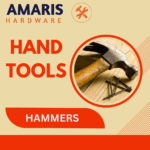 Hammers
Hammers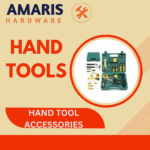 Hand Tool Accessories
Hand Tool Accessories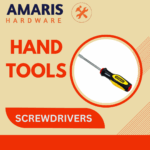 Screwdrivers
Screwdrivers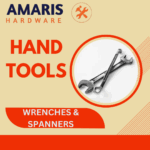 Wrenches & Spanners
Wrenches & Spanners Pliers & Cutters
Pliers & Cutters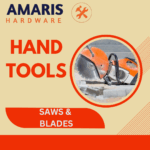 Saws & Blades
Saws & Blades Measuring Tools
Measuring Tools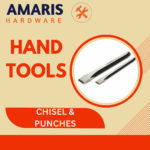 Chisels & Punches
Chisels & Punches Allen Keys & Hex Keys
Allen Keys & Hex Keys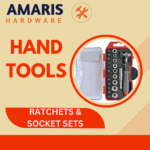 Ratchets & Socket Sets
Ratchets & Socket Sets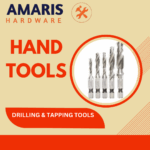 Drilling & Tapping Tools
Drilling & Tapping Tools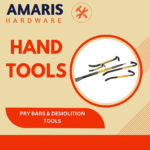 Pry Bars & Demolition Tools
Pry Bars & Demolition Tools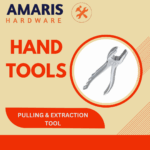 Pulling & Extraction Tools
Pulling & Extraction Tools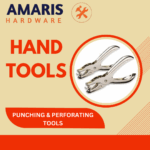 Punching & Perforating Tools
Punching & Perforating Tools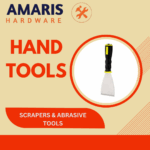 Scrapers & Abrasive Tools
Scrapers & Abrasive Tools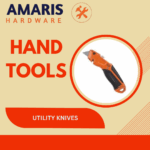 Utility Knives
Utility Knives Woodworking Tools
Woodworking Tools Clamps & Vises
Clamps & Vises
 Hinges & Latches
Hinges & Latches Hooks & Brackets
Hooks & Brackets Door Handles & Locks
Door Handles & Locks Drawer Slides & Cabinet Hardware
Drawer Slides & Cabinet Hardware Window Hardware
Window Hardware Chains & Cables
Chains & Cables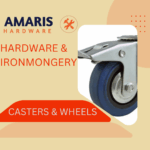 Casters & Wheels
Casters & Wheels Shelving & Storage Systems
Shelving & Storage Systems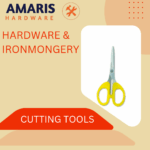 Cutting Tools
Cutting Tools
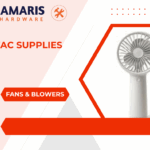 Fans & Blowers
Fans & Blowers HVAC Filters
HVAC Filters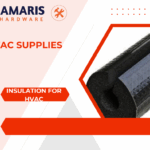 Insulation for HVAC
Insulation for HVAC Air Conditioners
Air Conditioners Ventilation Ducts & Fittings
Ventilation Ducts & Fittings Thermostats & Controllers
Thermostats & Controllers Refrigerants
Refrigerants
 Food Processing Machinery
Food Processing Machinery Gaskets & Seals
Gaskets & Seals Harvesting Equipment
Harvesting Equipment Hydraulic Fittings
Hydraulic Fittings Industrial Fasteners
Industrial Fasteners Industrial Hoses
Industrial Hoses Bearings & Bushings
Bearings & Bushings Belts & Pulleys
Belts & Pulleys Lubricants & Greases
Lubricants & Greases Metal Sheets & Bars
Metal Sheets & Bars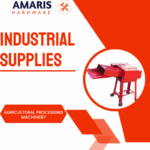 Agricultural Processing Machinery
Agricultural Processing Machinery Poultry Processing Equipment
Poultry Processing Equipment
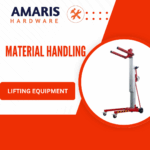 Lifting Equipment
Lifting Equipment Transport Equipment
Transport Equipment Storage Solutions
Storage Solutions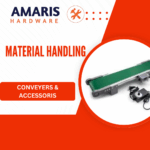 Conveyors and Accessories
Conveyors and Accessories Construction Machinery
Construction Machinery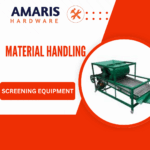 Screening Equipment
Screening Equipment Heavy Machinery
Heavy Machinery
 Paint Brushes & Rollers
Paint Brushes & Rollers Paint Sprayers & Accessories
Paint Sprayers & Accessories Paint Strippers & Thinners
Paint Strippers & Thinners Paint Trays & Accessories
Paint Trays & Accessories Primers & Undercoats
Primers & Undercoats Interior Paints
Interior Paints Exterior Paints
Exterior Paints Varnishes & Stains
Varnishes & Stains Spray Paints
Spray Paints
 Pipes & Fittings
Pipes & Fittings Plumbing Tools
Plumbing Tools Pumps & Motors
Pumps & Motors Valves & Taps
Valves & Taps Faucets & Fixtures
Faucets & Fixtures Hoses & Tubing
Hoses & Tubing Water Heaters
Water Heaters Drainage Systems
Drainage Systems Sealants & Adhesives for Plumbing
Sealants & Adhesives for Plumbing
 Nail Guns
Nail Guns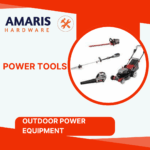 Outdoor Power Equipment
Outdoor Power Equipment Planers or Woodworking Power Tools
Planers or Woodworking Power Tools Pneumatic Tool
Pneumatic Tool Power Tool Accessories
Power Tool Accessories Drills & Drivers
Drills & Drivers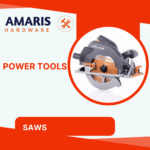 Saws
Saws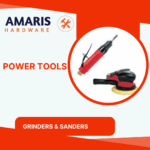 Grinders & Sanders
Grinders & Sanders Heat Guns
Heat Guns Impact Wrenches
Impact Wrenches Batteries & Chargers
Batteries & Chargers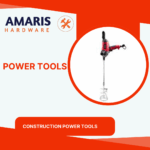 Construction Power Tools
Construction Power Tools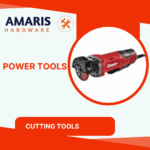 Cutting Tools
Cutting Tools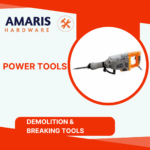 Demolition & Breaking Tools
Demolition & Breaking Tools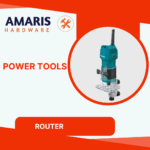 Router
Router Woodworking Machinery
Woodworking Machinery
 Safes
Safes Security Cameras
Security Cameras Personal Protective Equipment (PPE)
Personal Protective Equipment (PPE) Fire Safety Equipment
Fire Safety Equipment Locks & Padlocks
Locks & Padlocks Motion Sensors & Alarms
Motion Sensors & Alarms
 Shelving Units
Shelving Units Storage Bins & Containers
Storage Bins & Containers Toolboxes & Tool Chests
Toolboxes & Tool Chests Pegboards & Hooks
Pegboards & Hooks Workbenches
Workbenches Drawer Organizers
Drawer Organizers Labeling Supplies
Labeling Supplies
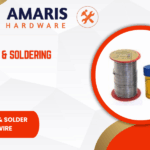 Flux & Solder Wire
Flux & Solder Wire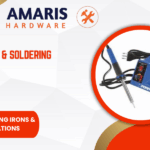 Soldering Irons & Stations
Soldering Irons & Stations Welding Accessories
Welding Accessories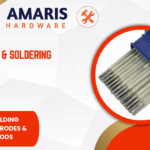 Welding Electrodes & Rods
Welding Electrodes & Rods Welding Helmets & Gloves
Welding Helmets & Gloves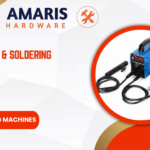 Welding Machines
Welding Machines Welding Safety Equipment
Welding Safety Equipment Gas Equipment – Regulators & Gauges
Gas Equipment – Regulators & Gauges
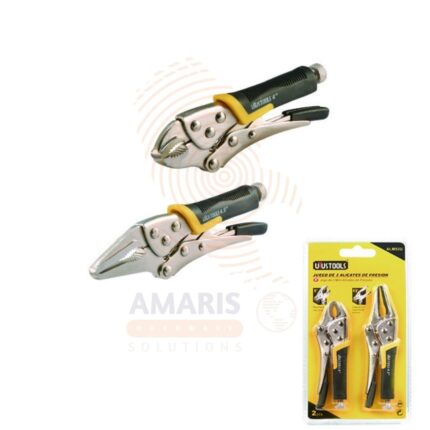
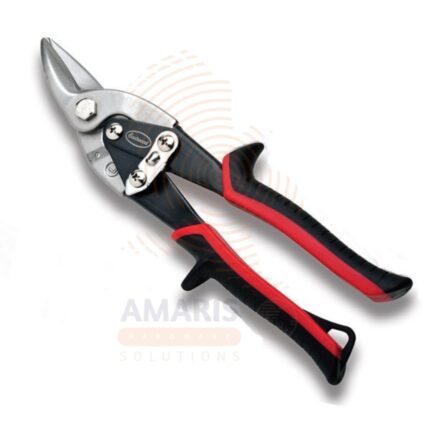
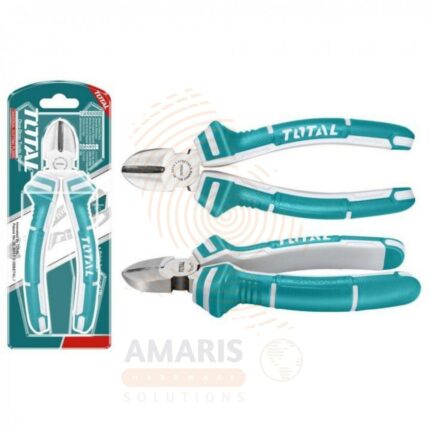

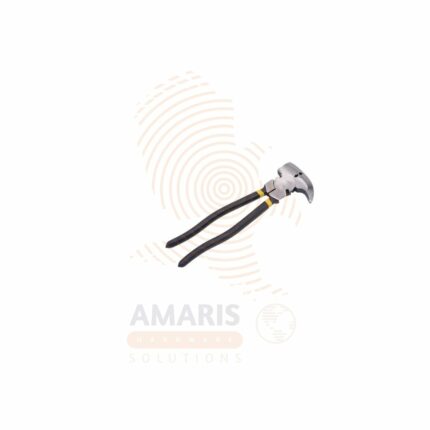
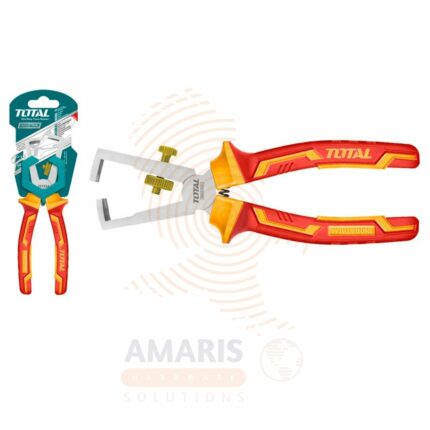
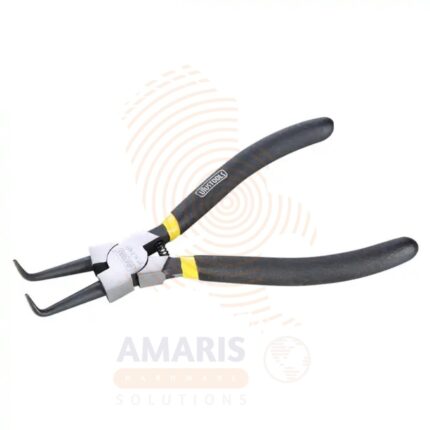
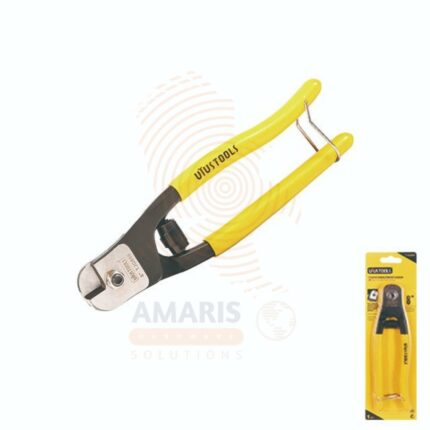





Reviews
There are no reviews yet.